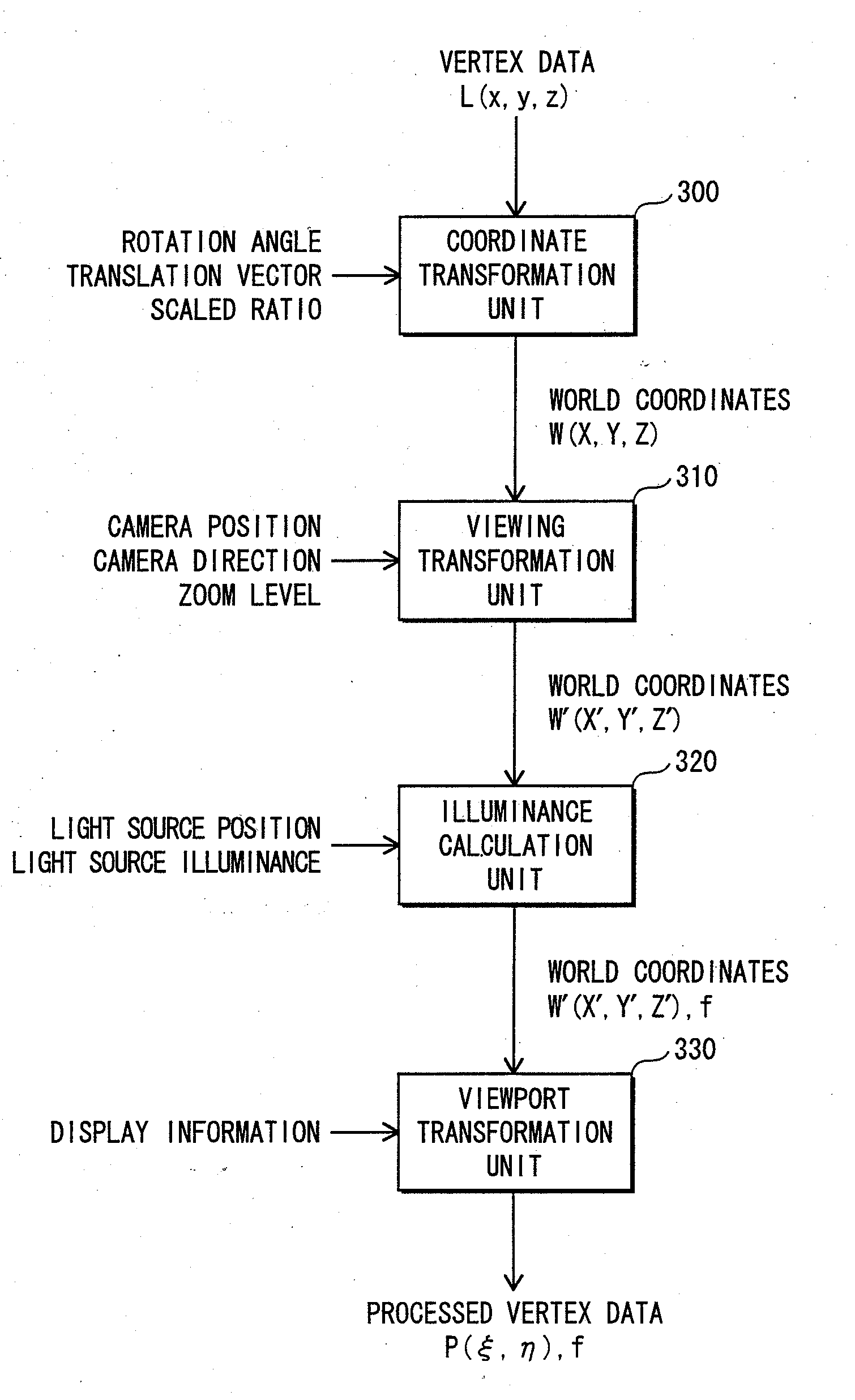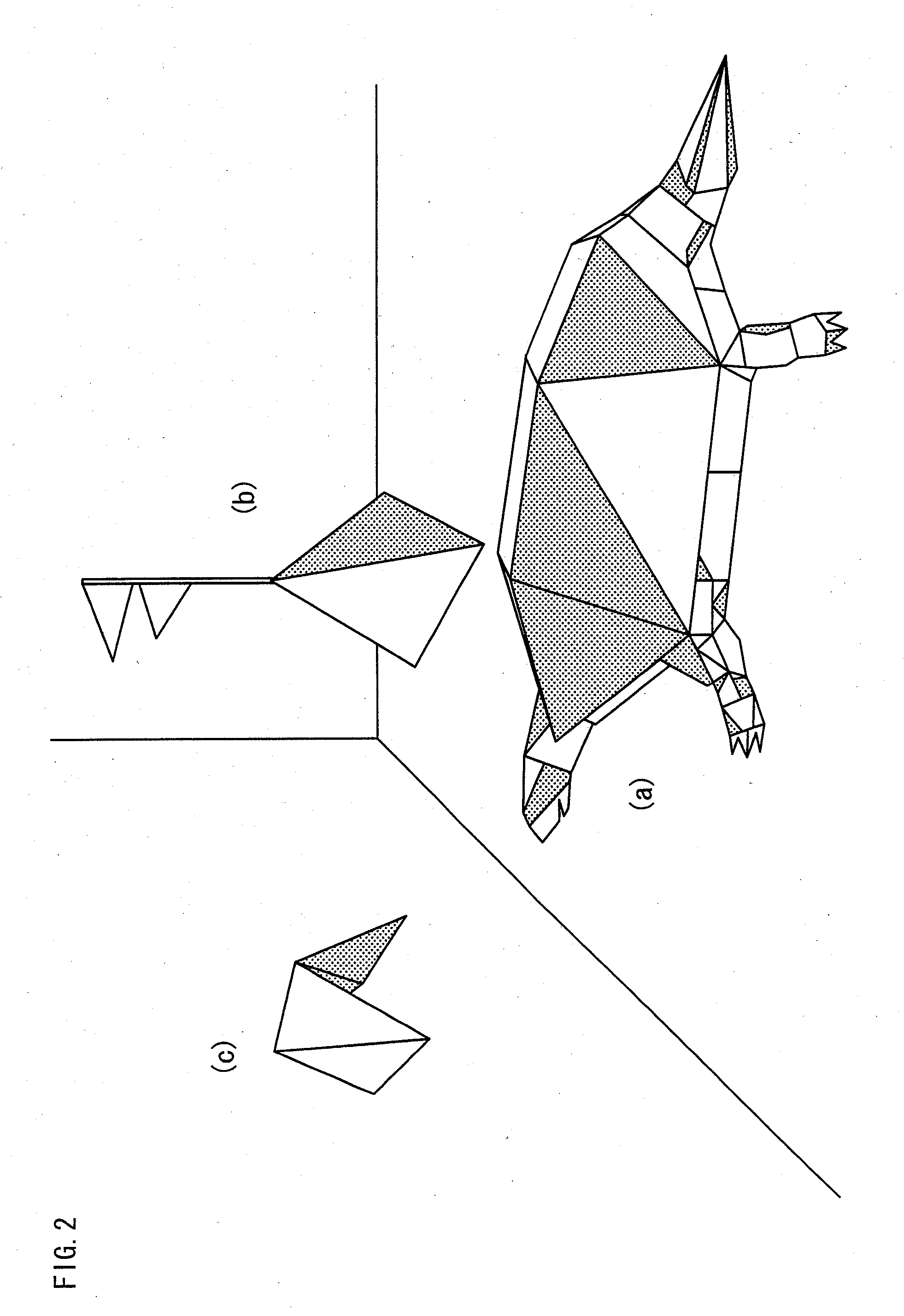Processing device
a processing device and geometrie technology, applied in the field of geometrie process, to achieve the effect of reducing power consumption and cost, reducing clock frequency, and prolonging calculation tim
- Summary
- Abstract
- Description
- Claims
- Application Information
AI Technical Summary
Benefits of technology
Problems solved by technology
Method used
Image
Examples
first embodiment
[0084]A processing device in a first embodiment of the present invention is incorporated in a mobile phone as shown in FIG. 1, and generates setup data that is for rendering projected images of three-dimensional objects on a display, based on a game program and game data that are recorded in a memory.
[0085]Here, the three-dimensional objects refer to characters and buildings in a game, and the game data refers to vertex data and polygon data. The vertex data includes coordinates of vertices of polygons when the above three-dimensional objects are modeled with use of the polygons. The polygon data includes information indicating which vertices are connected to create a polygon. Also, the game program includes microcode for calculating setup data from the vertex data and the polygon data. The setup data is a data string in which pixels of a display are in one-to-one correspondence with pixel information pieces that each indicate illuminance etc.
[0086]For example, FIG. 2 shows an examp...
second embodiment
[0165]In a second embodiment of the present invention, a description is provided of an example in which the structure of a plurality of processors in a processing device is different from the structure thereof in the first embodiment. In the first embodiment, (i) a computation unit that has performed a vertex process to obtain processed vertex data and (ii) a register that stores the processed vertex data belong to the same processor, and an input / output unit of another processor acquires the processed vertex data from the register of the processor. In the second embodiment, processed vertex data, which is obtained by a computation unit performing a vertex process on vertex data, is transmitted to an input / output unit. Then, the input / output unit transmits the processed vertex data to registers in other processors.
[0166]FIG. 20 shows a construction of a processing device in the second embodiment of the present invention. The processing device in the second embodiment includes the fo...
third embodiment
[0180]In a third embodiment of the present invention, a description is provided of an example in which a plurality of processors in a processing device cyclically receive and transmit the processed vertex data. In the first and the second embodiments, each of the input / output units receives and transmits processed vertex data between a plurality of registers. However, in the third embodiment, each of the input / output units transmits processed vertex data to only one of the input / output units.
[0181]FIG. 22 shows a construction of the processing device in the third embodiment of the present invention. The processing device in the third embodiment of the present invention includes: the four processors 200a, 200b, 200c, and 200d; the clock 240 for driving the processors; the distribution unit 250 for distributing vertex data to each processor; and the allocation unit 260 for allocating a processor that is for executing the polygon process. The third embodiment is the same as the first a...
PUM
 Login to View More
Login to View More Abstract
Description
Claims
Application Information
 Login to View More
Login to View More - R&D
- Intellectual Property
- Life Sciences
- Materials
- Tech Scout
- Unparalleled Data Quality
- Higher Quality Content
- 60% Fewer Hallucinations
Browse by: Latest US Patents, China's latest patents, Technical Efficacy Thesaurus, Application Domain, Technology Topic, Popular Technical Reports.
© 2025 PatSnap. All rights reserved.Legal|Privacy policy|Modern Slavery Act Transparency Statement|Sitemap|About US| Contact US: help@patsnap.com



